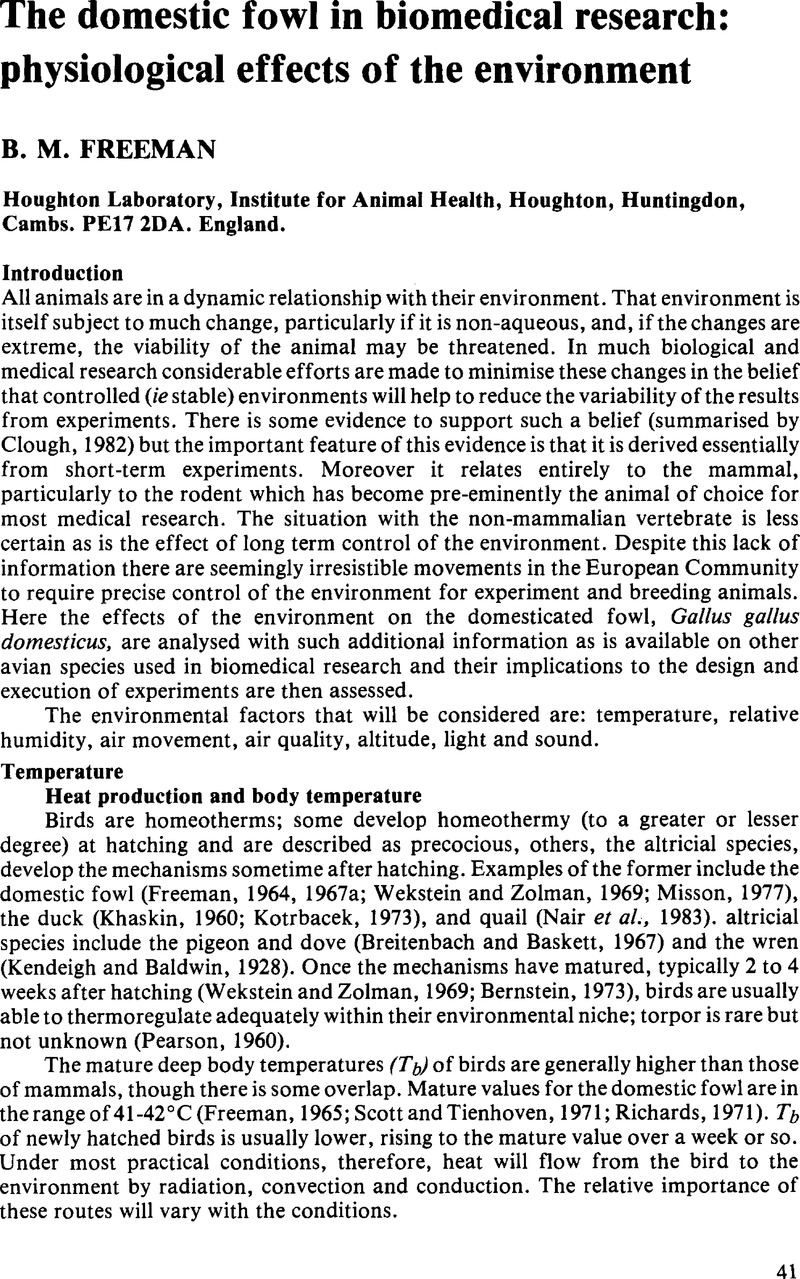Crossref Citations
This article has been cited by the following publications. This list is generated based on data provided by Crossref.
Yahav, Shlomo
Goldfeld, Sergio
Plavnik, Isaak
and
Hurwitz, Shmuel
1995.
Physiological responses of chickens and turkeys to relative humidity during exposure to high ambient temperature.
Journal of Thermal Biology,
Vol. 20,
Issue. 3,
p.
245.
EL-GENDY, ESSAM
and
WASHBURN, KENNETH W.
1995.
Genetic Variation in Body Temperature and its Response to Short-Term Acute Heat Stress in Broilers.
Poultry Science,
Vol. 74,
Issue. 2,
p.
225.
Alves, Sulivan Pereira
Silva, Iran José Oliveira da
and
Piedade, Sônia Maria de Stefano
2007.
Avaliação do bem-estar de aves poedeiras comerciais: efeitos do sistema de criação e do ambiente bioclimático sobre o desempenho das aves e a qualidade de ovos.
Revista Brasileira de Zootecnia,
Vol. 36,
Issue. 5,
p.
1388.
Silva, Raquel Baracat Tosi Rodrigues da
Nääs, Irenilza de Alencar
and
Moura, Daniella Jorge de
2009.
Broiler and swine production: animal welfare legislation scenario.
Scientia Agricola,
Vol. 66,
Issue. 6,
p.
713.
NEVES, DIEGO P.
NÄÄS, Irenilza De A.
and
BARACHO, Marta S.
2010.
AMBIENTE DE ALOJAMENTO E EQUIPAMENTOS DE ALIMENTAÇÃO NA AVICULTURA INDUSTRIAL BRASILEIRA - UMA REVISÃO.
Revista Brasileira de Engenharia de Biossistemas,
Vol. 4,
Issue. 1,
p.
01.
Lamarca, DSF
Pereira, DF
Magalhães, MM
and
Salgado, DD
2018.
Climate Change in Layer Poultry Farming: Impact of Heat Waves in Region of Bastos, Brazil.
Brazilian Journal of Poultry Science,
Vol. 20,
Issue. 4,
p.
657.
Sinkalu, Victor Olusegun
and
Ayo, Joseph Olusegun
2018.
Combined effects of retinol, ascorbic acid and α-tocopherol on diurnal variations in rectal temperature of Black Harco pullets subjected to heat stress.
International Journal of Biometeorology,
Vol. 62,
Issue. 1,
p.
9.
ZHOU, Ying
ZHANG, Min-hong
FENG, Jing-hai
and
DIAO, Hua-jie
2019.
Effect of relative humidity at chronic temperature on growth performance, glucose consumption, and mitochondrial ATP production of broilers.
Journal of Integrative Agriculture,
Vol. 18,
Issue. 6,
p.
1321.
ZHOU, Ying
LI, Xiu-mei
ZHANG, Min-hong
and
FENG, Jing-hai
2019.
Effect of relative humidity at either acute or chronic moderate temperature on growth performance and droppings' corticosterone metabolites of broilers.
Journal of Integrative Agriculture,
Vol. 18,
Issue. 1,
p.
152.
عمرالاسطى , سالمة محمد ابو بكر
and
شرفاد , سالم محمد مخاطره
2021.
دراسة بعض تأثيرات إزالة الغدة الزمكية عند عمرين مبكرين على بعض الصفات الإنتاجية والفسيولوجية لطيور دجاج اللحم سلالة Ross.
Al-Mukhtar Journal of Sciences,
Vol. 36,
Issue. 4,
p.
342.
Al-Khateeb, Faiyz Sami
and
Al-Sufi, Khaled Hadi
2023.
The Effect of Adding Licorice Extract and Sodium Bicarbonate to Drinking Water on the Productive Performance of Broilers Raised under Elevated Temperatures.
IOP Conference Series: Earth and Environmental Science,
Vol. 1213,
Issue. 1,
p.
012072.



